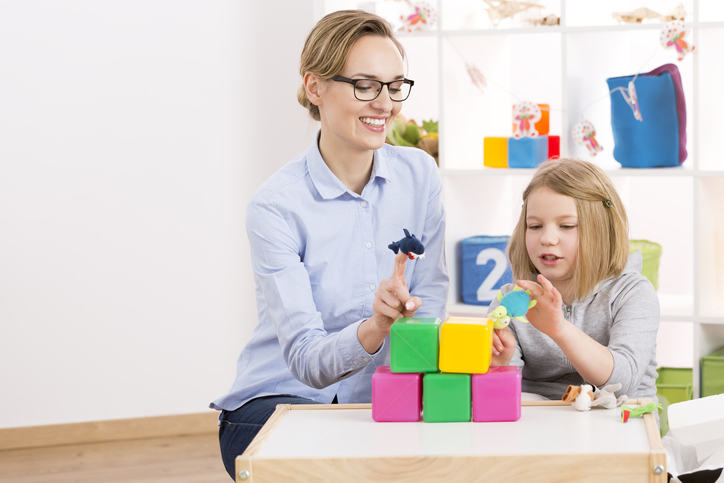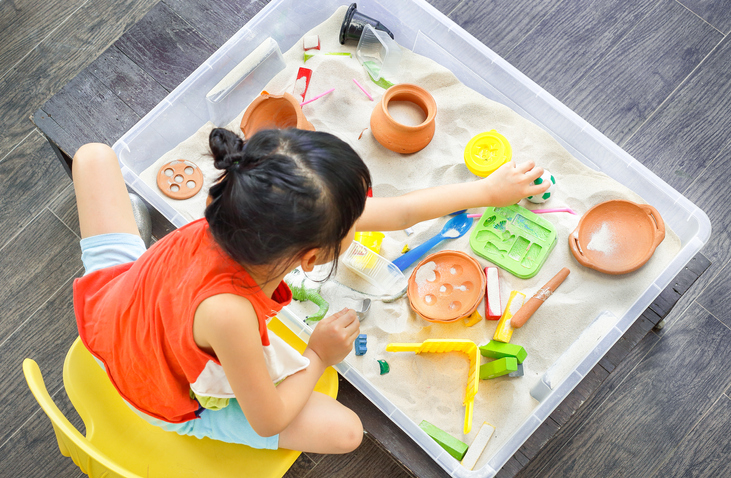Helping Children Through Play
Play is natural and fun for children and an important part of learning and development. Play therapy is a therapy used by licensed mental health professionals to help children to better express their thoughts and emotions and to address a variety of problems. When children are unable to put into words their feelings or concerns, play can help them express themselves and learn ways to cope.

Play therapy is typically used with children ages 3 to 12 and typically takes place in a safe and comfortable playroom. Children usually participate in weekly sessions of about 30 to 45 minutes each. The play therapy can be unstructured, allowing the child freedom with little supervision from the therapist, or directive with more instruction from the therapist.
Play therapy is used by mental health agencies, in schools and hospitals, and in private practice. Extensive research has shown the effectiveness of play therapy for a variety of concerns and disorders, including children experiencing stressful or traumatic events (family crisis, violence), academic or social problems, grief, anxiety or learning disabilities. For example, play therapy is used effectively to help children in hospitals to reduce anxiety and distress. It has also been used to help reduce the need for sedation in children undergoing diagnostic MRIs. For children with social or emotional problems, play therapy can help them communicate better, change behavior, develop problem-solving skills, and relate to others in positive ways.
The Play Therapy Association explains that play therapy can help children:
- develop new and creative solutions to problems
- develop respect and acceptance of self and others
- cultivate empathy and respect for thoughts and feelings of others
- learn new social skills and relational skills
 Social media, video games and other technology are a fundamental part of most people’s lives, including most young children and they are inevitably working their way into play therapy. In the 2018 book, Play Therapy, authors Pamela Meersand, Ph.D., and Karen J. Gilmore, M.D., suggest that clinicians’ understanding of and familiarity with video games, social media and other technology are “vital links to the mental lives of children in the twenty-first century.” For example, video games can free children from real life constraints, but also have their own rules, values and relationships “which provide the therapist with opportunities to understand how the child navigates his or her chosen experience,” Meersand and Gilmore note.
Social media, video games and other technology are a fundamental part of most people’s lives, including most young children and they are inevitably working their way into play therapy. In the 2018 book, Play Therapy, authors Pamela Meersand, Ph.D., and Karen J. Gilmore, M.D., suggest that clinicians’ understanding of and familiarity with video games, social media and other technology are “vital links to the mental lives of children in the twenty-first century.” For example, video games can free children from real life constraints, but also have their own rules, values and relationships “which provide the therapist with opportunities to understand how the child navigates his or her chosen experience,” Meersand and Gilmore note.
You can search for an approved play therapy provider at the Association for Play Therapy.
References
- Chinekesh A, et al. The effect of group play therapy on social-emotional skills in preschool children. Glob J Health Sci. 2013, 6(2):163-7.
- Psychology Today. Therapy types: Play Therapy.
- Casado-Frankel, T. How Play Therapy Works. Psychology Today.
- Association for Play Therapy (APT) (Includes a database of research supporting play therapy as an evidence-based practice.)
- Meersand, P., Gilmore, KJ. Play Therapy: A Psychodynamic Primer for the Treatment of Young Children. American Psychiatric Association Publishing. 2018
